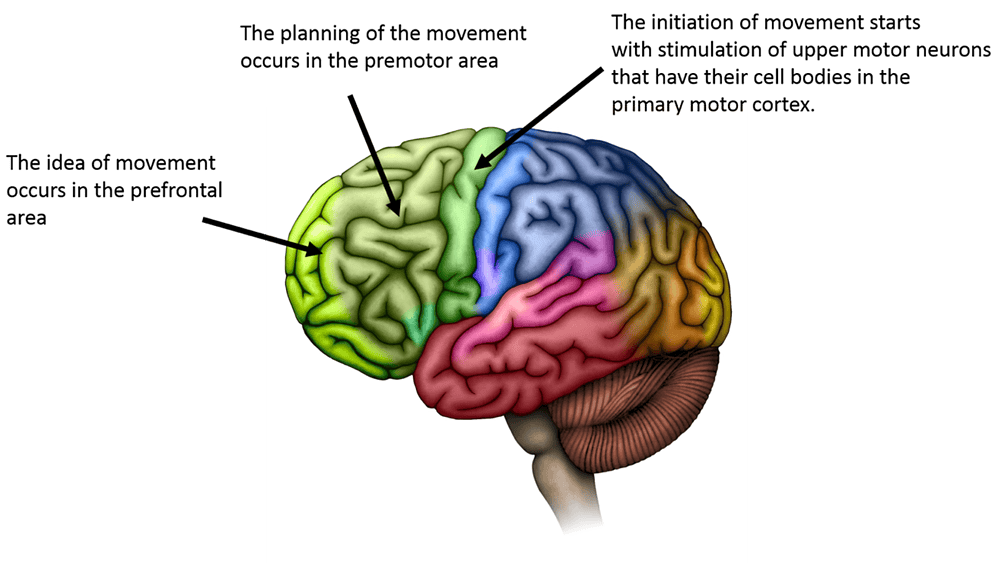
Most of us visualize changes in our skeletal muscle when we think about exercise programs, but how do these structures actually work and what is their job? Protect our bones and joints? Create Movement? Improve Circulation? Ideally, I would say yes to all three, but these are ultimately by-products of the muscles ability to conduct its primary function, generating tension (pull).
The muscles capacity to develop tension depends on the support from many biological systems, but I would like to focus on the electrical system providing the power. If we don’t power this machine, it renders useless and unfortunately for our muscles, the phrase “If you don’t use it, you lose it” proves valid. So where does this electricity come from and how do our muscles utilize it to create force? Can we enhance our electrical efficiency?
Electrical energy is generated in our bodies through the conversion of chemical (Electrolytes, Neurotransmitters, etc.) to electrical sources (Action Potentials) and with limited exception, our BRAINS are the Maestros to its’ orchestration. Whether we are aware or not, our brain is constantly interpreting where we are in space and where the length/tension resides in each joint. Depending on its efficiency and peripheral resources, the brain dictates how to react and where the electricity will be directed.
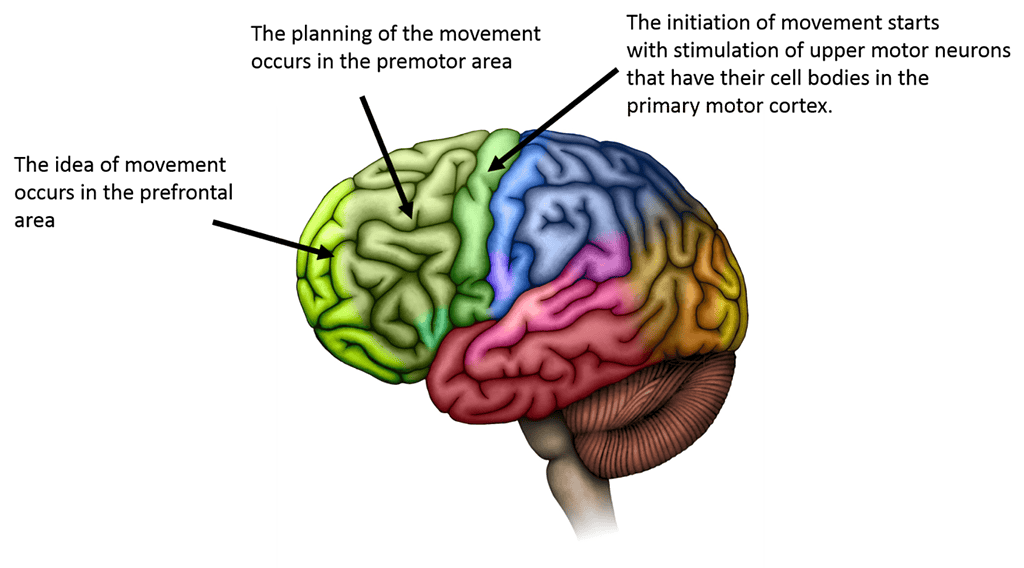 There are many reasons our brain chooses to utilize one muscle fiber, or region of muscle fibers over another to create motion or stability. In regard to electrical energy, our brains will prioritize efficiency and orchestrate its’ distribution based on each regions’ capacity to utilize this energy. One of the most influential factors for a muscles’ capacity to “fire” is the size and efficiency of the motor unit(s) that control it.
There are many reasons our brain chooses to utilize one muscle fiber, or region of muscle fibers over another to create motion or stability. In regard to electrical energy, our brains will prioritize efficiency and orchestrate its’ distribution based on each regions’ capacity to utilize this energy. One of the most influential factors for a muscles’ capacity to “fire” is the size and efficiency of the motor unit(s) that control it.
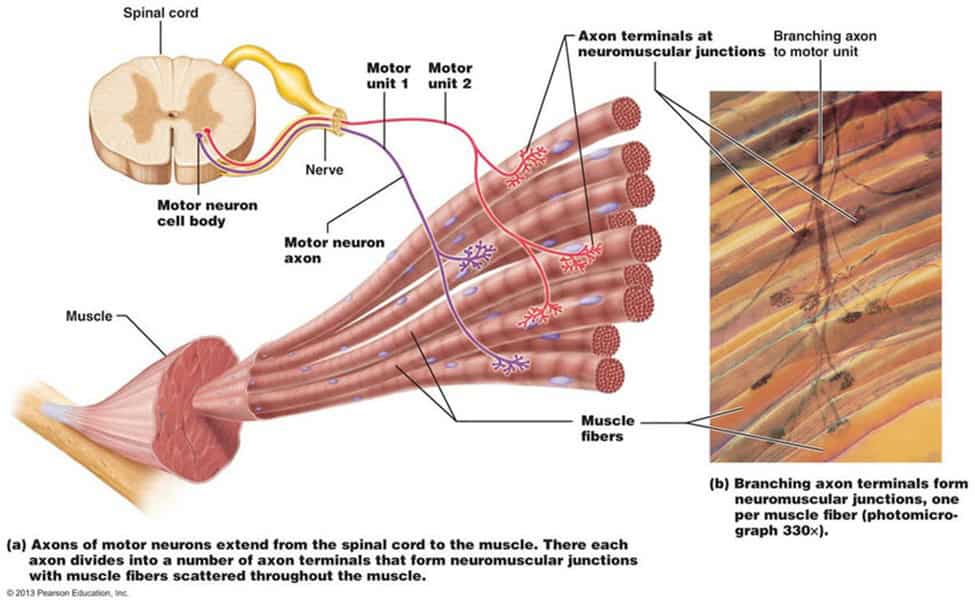 Once our brains orchestrate the electrical distribution, our bodies must convert this electrical energy into mechanical energy to contract.
Once our brains orchestrate the electrical distribution, our bodies must convert this electrical energy into mechanical energy to contract.
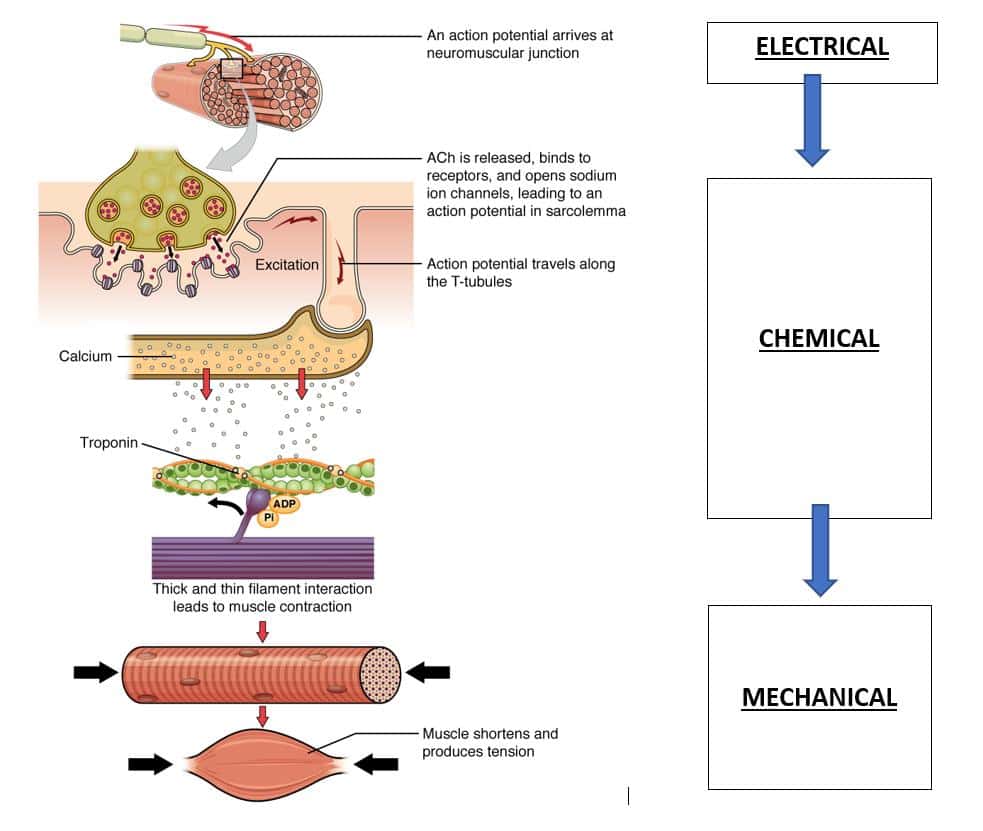 Let’s take a look at how the brain communicates with muscles when you are instructed to conduct an exercise without any visual demonstrations or follow-up instructions to assists you?
Let’s take a look at how the brain communicates with muscles when you are instructed to conduct an exercise without any visual demonstrations or follow-up instructions to assists you?
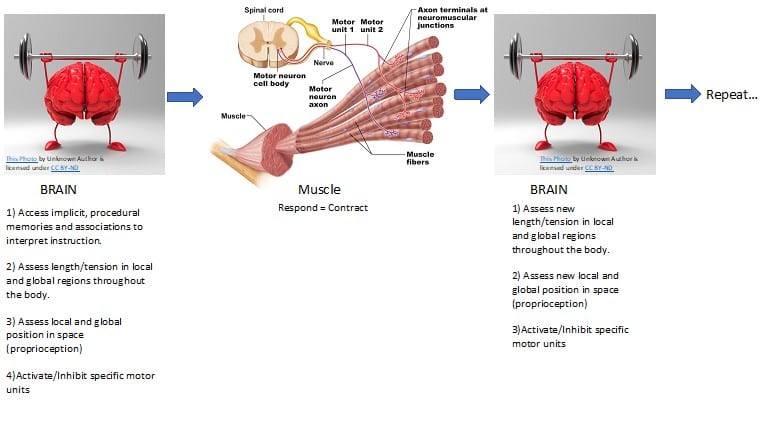
Now, with visual demonstrations, continuous instruction, and/or manual assistance.
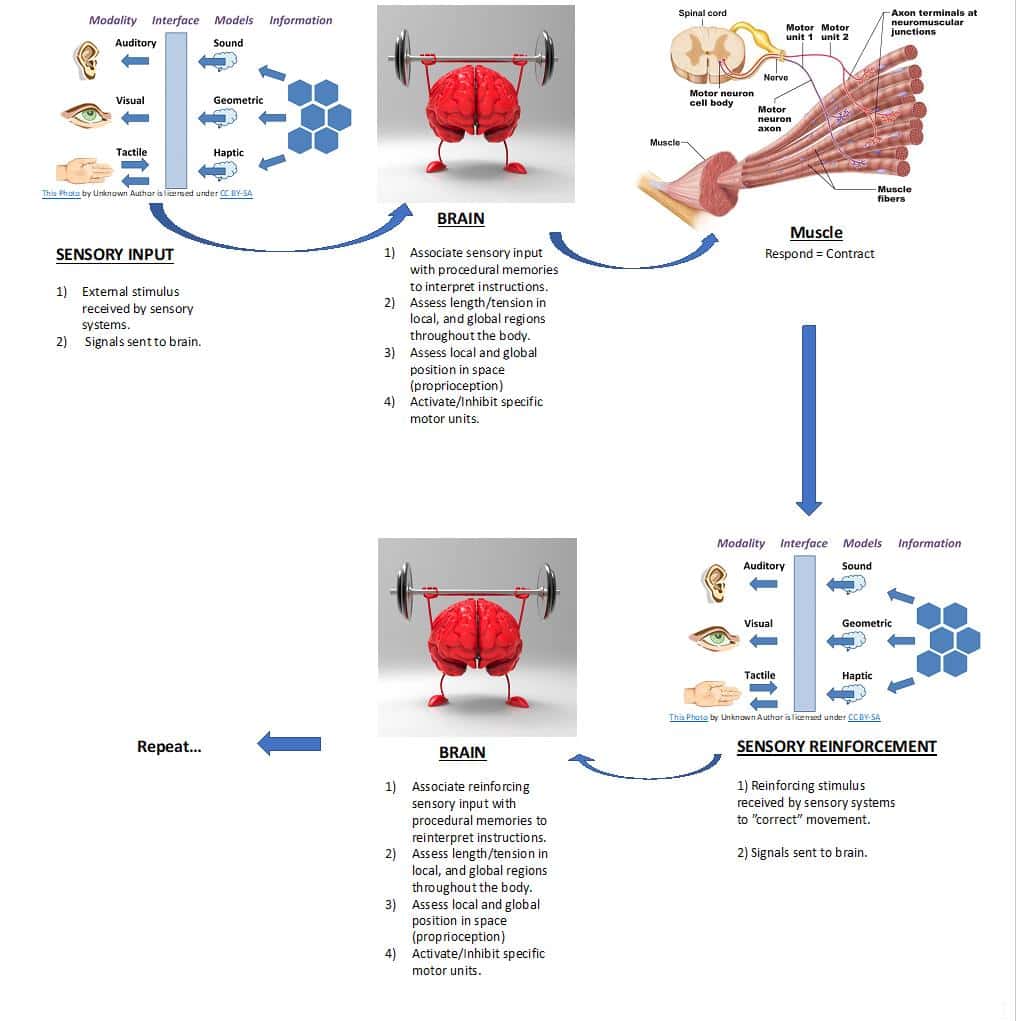
As you can see, the addition of verbal, visual, and/or tactile instruction increases the amount of information the brain receives relating to the exercise. Each stimulus provides a puzzle piece to our overall interpretation of the experience.
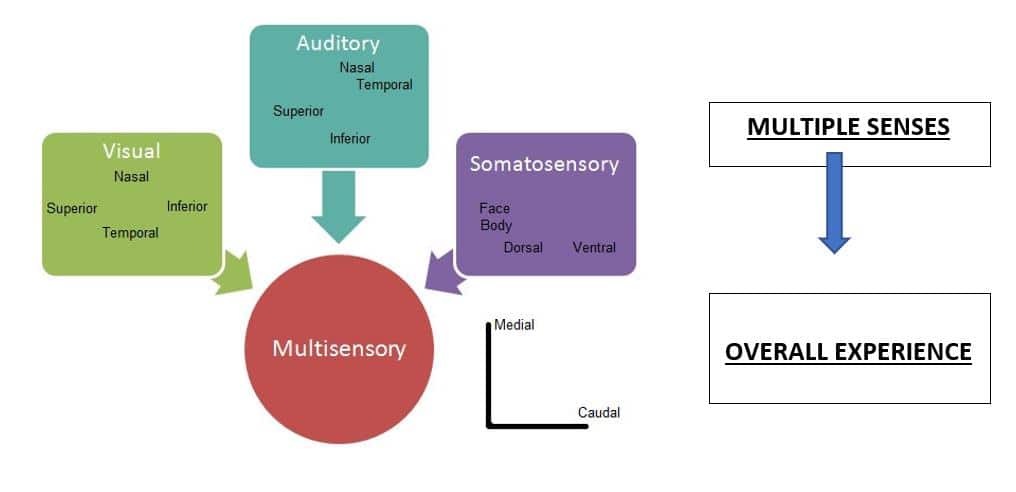 Some considerations when modifying stimulus amounts or intensity:
Some considerations when modifying stimulus amounts or intensity:
- How experienced is this person with these exercises, general motion, and/or complex movements?
- What kind of learning preference does this person have?
- Are there any injuries and/or sensitivities to affect sensory efficiency?
- How much stimulation should we provide in our programs?
Depending on many factors, each individual is unique in their ability to utilize specific amounts and types of stimulation. Psychologically, we are more motivated, learn, and perform best when our arousal levels are perfectly balanced. Too much stimulation can be stressful, hindering our performance and ability to learn. Imagine trying to learn or remember specific instructions with blaring music, laser lights, and massage guns all over you. On the contrary, too little stimulation and we get bored, zone out, and again compromise performance and learning.
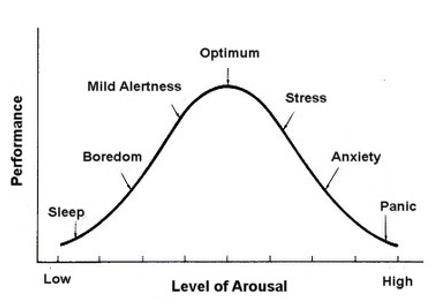 This Photo by Unknown Author is licensed under CC BY-SA
This Photo by Unknown Author is licensed under CC BY-SA
Here are a few “brain training” tests and exercise progressions I use myself, and with clients to enhance their intuitive movement and motor unit efficiency. When successfully progressed, they can improve balance, proprioception, joint stability and mobility, and overall strength. The KEY to these drills is constantly focusing your awareness on the experience – listen, watch, FEEL, replicate.
- No visual, audio, or kinesthetic input
- Static(Position) –Laying on your back à Close eyes à guess where joints are in space relative to one another. Is your back extended? Are your shoulder and/or hips rotated? Are your feet pointed up or down? What is your neck and head doing?
- Dynamic (Position + Motion) –Laying on back à Close eyes à Lift one of your joints that will not cause discomfort à Guess what different joints are doing throughout motion and at random, stationary points.
- Assisted with Additional Sensory input
- Visual
- Seated Facing Mirror à Close eyes à Lift one of your arms up like a Field Goal (limit range for discomfort/pain) à Guess what joints are doing throughout motion and at end range à open eyes to see what’s actually happening à Close eyes and repeat
- Kinesthetic
- Close eyes à Instructor Assisted shoulder raise (guiding with hands) à Guess what joints are doing throughout motion and at end range à Instructor Assisted “Corrections” à close eyes and repeat
- Audio
- Close eyes à Instructor Audio Cues throughout motion à Guess joint locations à Instructor Audio Corrections à Close eyes and repeat
- Electrical Stimulation
- Stimulator machines or TENS units can provide an external source of electrical energy to assist with muscle contractions. I would always consult with a healthcare professional before adding these to your routine.
- Visual
- Increase Gravitational Resistance
- Repeat Drills progressing the speed of motion
- Increase Complexity
- Repeat Drills with 2 joints (both arms) moving simultaneously…then 3 (both arms + spine)….then 4 (both arms + spine + hips)….etc.
- Applied Resistance
- Repeat Drills with band, dumbbell, or another source of external resistance.
- Concentric (squeeze up)
- Eccentric (control down)
- Isometric (freeze in random positions)
- Repeat Drills with band, dumbbell, or another source of external resistance.
